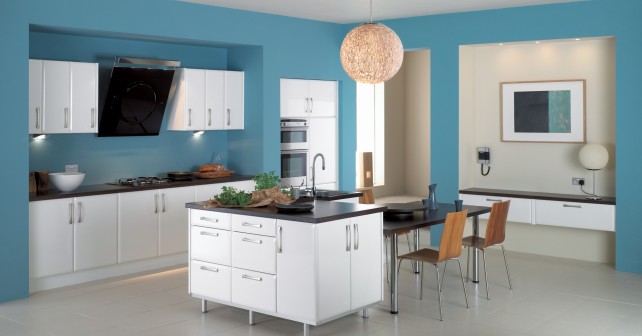- Have any questions?
- +234 818 5511 338
- info@housesolutions.com.ng
To Be Highly Productive, Paint Your Office With These Colors
Blinds used for Doors
8th May 2017
The cost of painting a house in Nigeria
17th January 2018Most of our clients here in Nigeria some times want to know which colour to paint their office and how that can affect their productivity and that of the employees. So we went online to dig this info. The following was lifted from alifeofproductivity.com and written by Angela Wright
Blue
A search on Google for “the most productive color”, will appear as if blue is the most “productive” color. Angela called this an “oversimplification”.
If you need to stimulate your mind, then yes, blue would likely make you the most productive. “If you’re an accountant, blue probably would make you more productive. But not everybody is an accountant.”
If you do mind-work all day, Angela recommends painting your office blue, but spicing it up with a bit of orange so that you introduce a bit of emotion into your mind-stimulating room. “If you have a blue office, you need to put a bit of orange in there to introduce a bit of balance, a bit of emotion, so that you’re not a cold bureaucrat.”
Yellow
“If you’re a designer, and you want creativity, blue isn’t going to be the color for you. Yellow is a better color”, because it stimulates your ego and spirits, and makes you more optimistic.
“It takes guts to be creative and come up with something new – that’s why yellow works in that environment.”
Red
If you want to be more productive doing something physical, red would make you more productive than either blue or yellow, because it stimulates you physically. If you’re hiring a bunch of guys to build you a house, for example, “blue isn’t going to be a lot of help to you – you want the red for physical strength and stimulus”.
Green
If you’re in an environment where having a strong sense of balance is the most important, green might just be the color that makes you the most productive. As well, “because it’s so balanced, calming, and reassuring, it’s great to use around anywhere money’s changing hands”. On the flip side, though, “it can be very stagnant and inert”, so an “action man, who loves red, is going to find green quite a strain”.
Which shade should you go with?
To determine which color to paint your surroundings, first narrow down which main color (or combination of colors) will work the best in your situation by deciding whether you want to affect your mind, emotions, body, or balance.
Then, pick a specific hue of that color. Naturally, keep in mind whether you want the color to stimulate or soothe you, by picking either a highly-saturated or lowly-saturated hue. Angela provided me with some advice for picking the right shade after that.
“The best advice I can ever give anybody in general is to point out that we were all born with a very accurate sense of color in general, and our kind of color in particular. If we hadn’t, we wouldn’t have survived evolution as we did.” As an example, evolution has taught us that green is a stable, balanced color – it is the sign of life and vitality, after all – and it is one of the reasons we see green as such a ‘balanced’ color.
Interestingly, at the same time, color is both very scientific and very personal. Angela recommends going with your gut, but only after determining which part of you that you’d like to affect. “Actually – you will know the colors that make you feel the most productive. It is different for everybody.”
Another tip: colors hardly ever exist in isolation; they’re usually surrounded by other colors. “Color works exactly the same way as music – as Thelonius Monk said, ‘there are no wrong notes’. Music and color work in the same way. There are no wrong colors either. It’s how you use them.” A color or musical note “doesn’t actually evoke much of an emotional response until it’s put with other colors, or other notes. And then, in both cases, whether you get a positive or negative emotional reaction depends on the relationship between the colors or the notes.”
“I cannot think of any circumstances in which we would be confronted by one color in isolation.”



